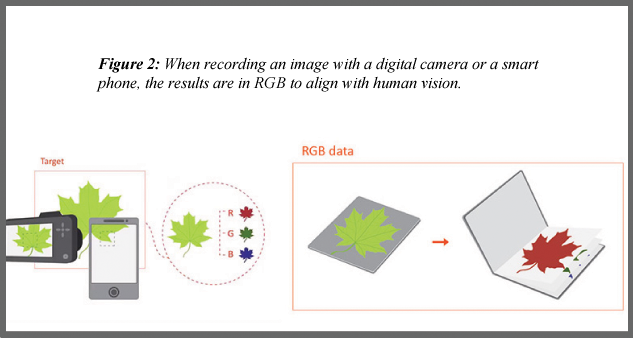|
||||||||||||||||||||||||||||||||||||||||||
|
||||||||||||||||||||||||||||||||||||||||||
Part Two: What is provided by a pushbroom camera?
Go
to Part One
Go to Specim
Go to Hyperspectral Cameras
|
|
Hyperspectral
imaging What does it provide? |
||||||||||||||||||
|
In Part One of this two-part series, we examined how a hyperspectral
camera works. We discussed the key components and how they contribute
to producing hyperspectral data. A hyperspectral camera collects a data cube. Hyperspectral
imaging produces a spectrum for each pixel in the image and so produces
a three-dimensional data set that we call a data cube. |
|||||||||||||||||||
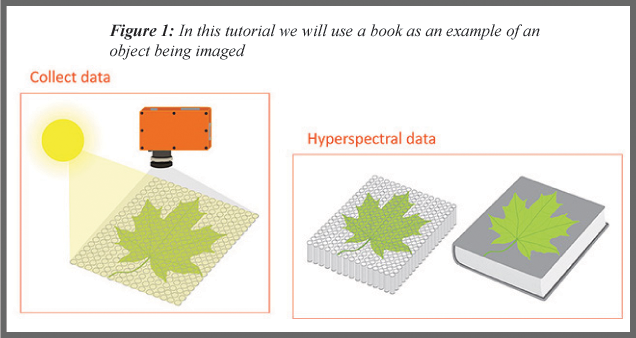 |
|||||||||||||||||||
|
Let's first examine how a hyperspectral camera compares to a standard digital camera or smart phone. A digital camera captures 3 colours for each pixel in an image; Red, Green and Blue and matches it to the way our eyes see colour. Each of these three colours is made up from a broad set of wavelengths. For example the Red channel in a digitial camera captures wavelengths from around 570nm to 700nm, Green from 430nm to 620nm and Blue from 400 to 550nm. If we imagine each of these colour channels is a page in our book, the result is a small book or leaflet with three pages. The colour image that we humans can see is the combination of colours from these pages as shown on the cover of the book in the image above. |
|||||||||||||||||||
|
|
|||||||||||||||||||
|
However, with a hyperspectral camera, our target leaf is imaged with hundreds of narrow wavelength channels (bands). The number of bands depends on the model of hyperspectral camera being used but each band may be only a few nanometres (nm) wide. In this example the leaf is imaged with 220 bands i.e. each pixel in the image has 220 bands. Using the book simile again, this translates to 220 pages in the book.
|
|||||||||||||||||||
 |
|||||||||||||||||||
|
It is clear when comparing the books produced by
the hyperspectral camera and the digital RGB camera, the book produced
by the hyperspectral camera is much thicker and contains a lot more
detailed information about our leaf.
|
|||||||||||||||||||
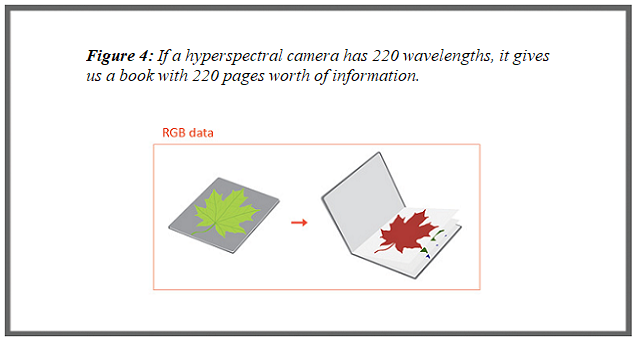 |
|||||||||||||||||||
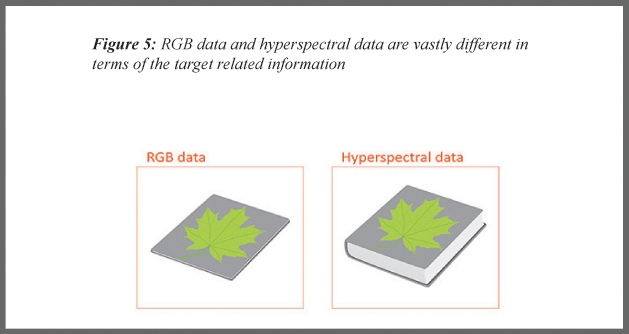 |
|||||||||||||||||||
|
A signficant difference between a hyperspectral camera and standard digital RGB camera is that in most cases a hyperspectral camera captures bands that are invisible to the human eye. Hyperspectral camera models can range from Ultraviolet light that is shorter than visible wavelengths to wavelengths in the thermal range that are far longer than what is visible i.e. 12,000nm.
|
|||||||||||||||||||
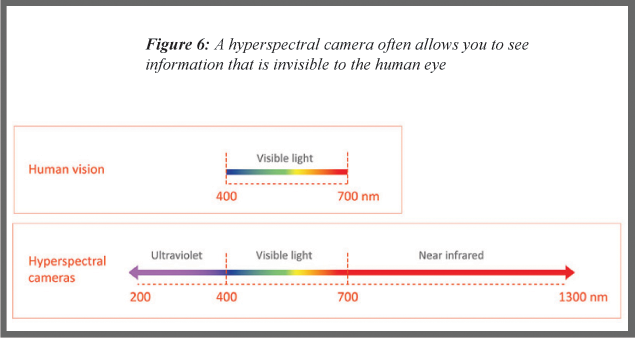 |
|||||||||||||||||||
|
The book cover showing our image leaf is constructed
from many wavelength bands. As said, every page of the book presents
its own information. By combining different pages we are able to
process different qualities of our target.
|
|||||||||||||||||||
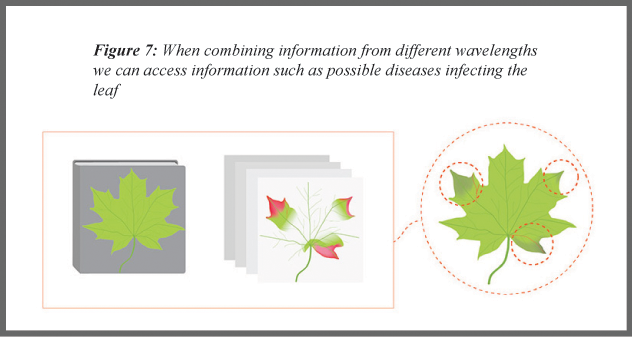 |
|||||||||||||||||||
|
We are also able to choose any point of the leaf
from the book cover and obtain its full, accurate, and contiguous
spectrum. This requires that we use all the information of that
specific point in every page of the book. It's comparable to drilling
into the book at that pixel location and collecting a spectrum of
that pixel.
|
|||||||||||||||||||
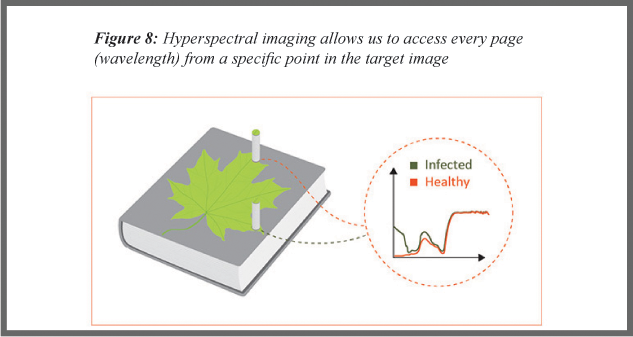 |
|||||||||||||||||||
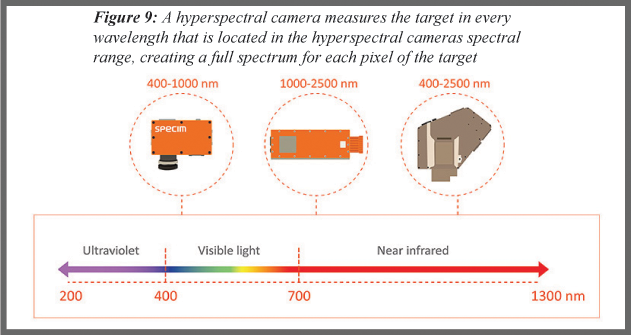 |
|||||||||||||||||||
|
The full spectral information that is collected becomes very versatile for the analysis, detection, and identification of chemical features. For the example above we mentioned plant disease. Other examples are detection of minerals or soil contituents, protein and fat in seeds, fat and the pH of meat, contamination of soil, detection of explosives .... and many many more. The raw data collected by a hyperspectral camera still requires a significant amount of processing (cleaning up) to be useful. Non-linearities in the sensor of the camera need to be corrected, dark noise needs to be removed to enhance SNR, spatial distortions need to be corrected, signal needs to be converted to engineering units, and if imaging from a distance, atmospheric conditions need to be allowed for. Once all of these have been calibrated for, then the data can be analysed with the many mathematical techniques available to extract cheimical features. This will be discussed in the future series of articles. |
|||||||||||||||||||
 |
|||||||||||||||||||
|
|||||||||||||||||||
|
If you like this page, please recommend it and share it. |
|||
| More | |||




